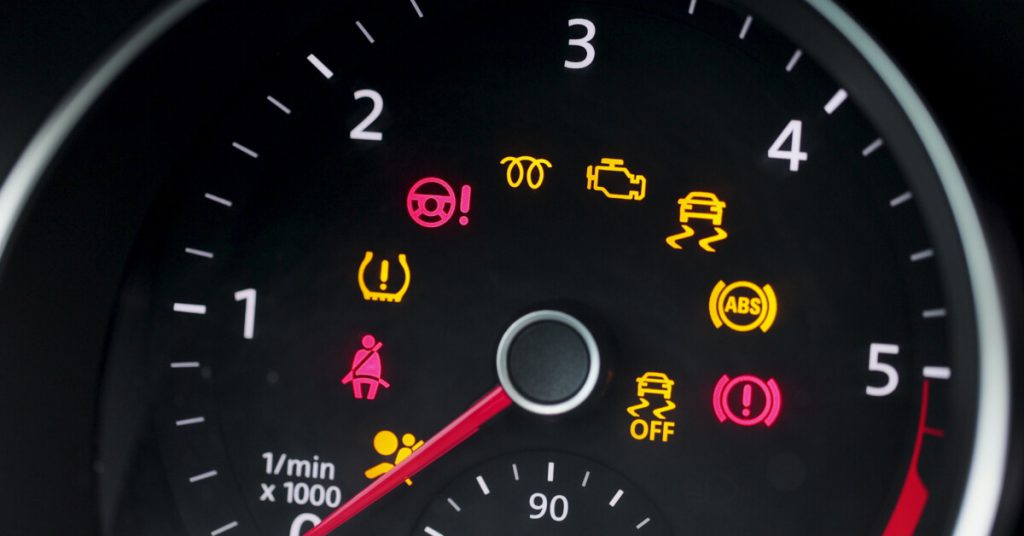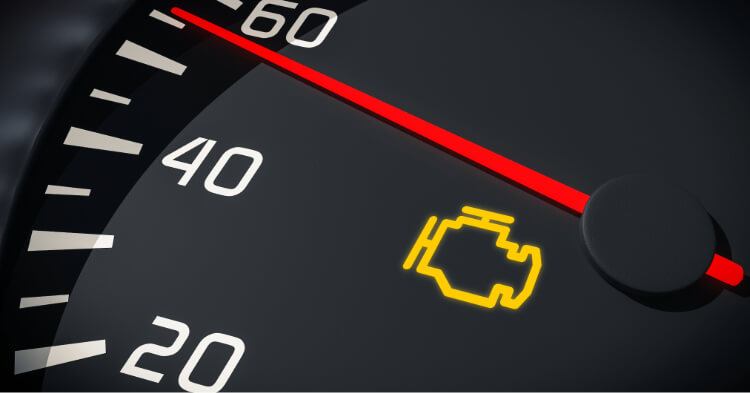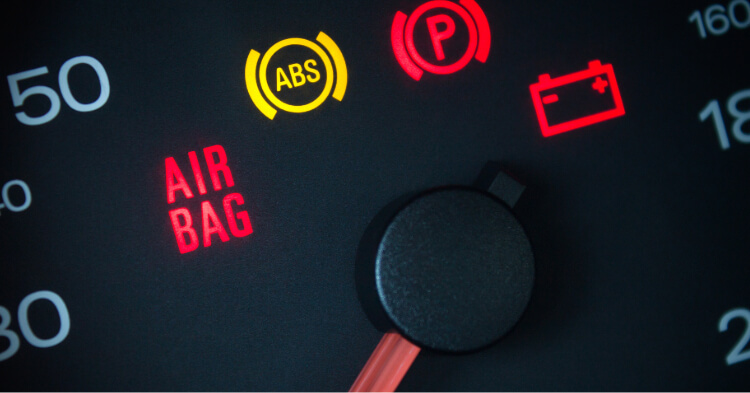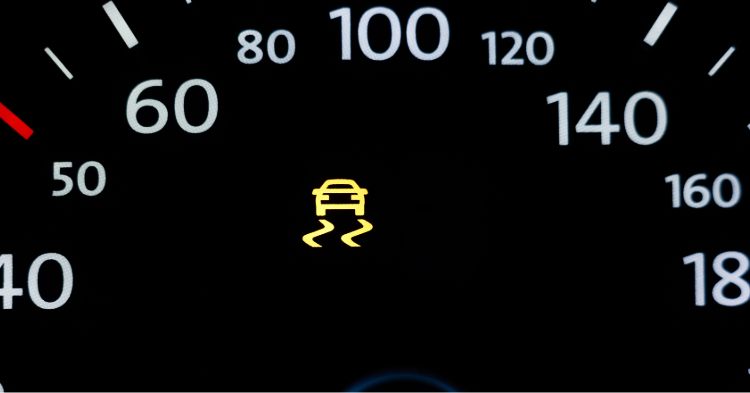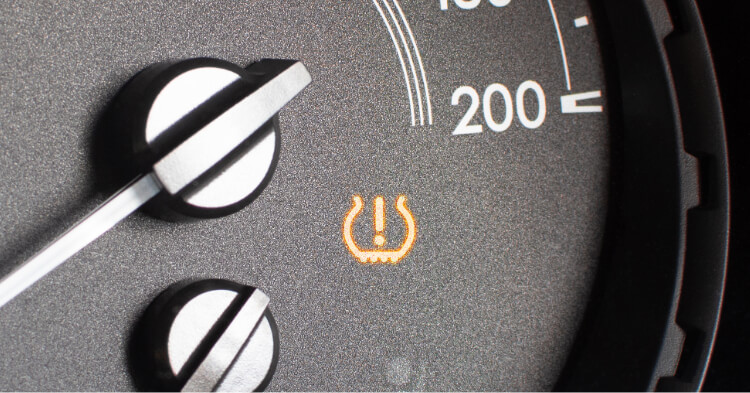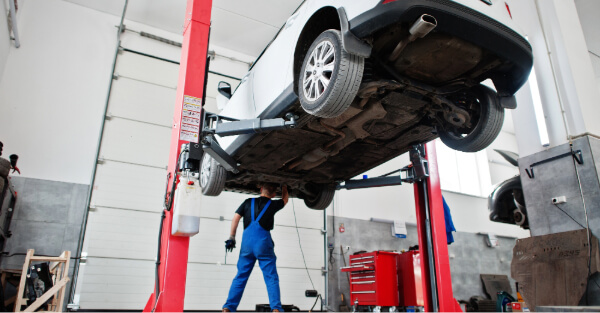What Are Dashboard Lights?
Dashboard lights serve as a vital communication tool between you and your vehicle. They indicate the status of various systems and alert you when something may be amiss. Whether it’s a minor issue like a loose gas cap or a serious problem like a brake system failure, these dash lights are designed to catch your attention and prompt you to take action as clearly as possible.
Understanding what each dashboard light means can prevent minor issues from escalating into expensive, potentially dangerous problems. For instance, a continuously illuminated dashboard light after starting your engine typically signals a potential problem that needs to be addressed. Conversely, if a light that should be illuminated during startup is not, it might indicate a malfunction in the warning system itself.
Regular vehicle maintenance plays a crucial role in managing dashboard light issues. Scheduled maintenance helps identify and fix problems before they trigger a warning light. This not only enhances your vehicle’s performance but also ensures your safety on the road.
Common Dashboard Warning Lights
Dashboard warning lights are designed to indicate potential problems with your vehicle. They act as a first line of defense, warning you to address issues before they escalate. These lights can range from minor alerts, like a loose fuel cap, to major warnings, like brake system failures and a battery light. Ignoring these car warning lights could turn a small problem into a bigger, more expensive, and potentially dangerous issue.
The color of the warning light often signifies the urgency of the issue. A red light dashboard light means immediate action is required, as it indicates a serious problem. An orange or yellow light suggests that the vehicle needs service or repair soon. Understanding these colors and what they signify can help you make informed decisions about stopping and seeking help.
Check Engine Light
The Check Engine Light, also known as the Malfunction Indicator Lamp, is one of the most well-known dashboard warning lights. It indicates potential car’s engine issues that need attention. This light can illuminate for various reasons, including airflow issues, faulty sensors, overheating, ignition faults, blocked fuel injectors, and problems with the catalytic converter.
If the Check Engine Light is yellow, it signifies a less serious warning, suggesting that you can continue driving but should consult a mechanic soon. However, a red Check Engine Light indicates a more serious problem that requires urgent attention to avoid further damage to your vehicle.
Brake System Warning Light
The Brake System Warning Light is a critical indicator of potential issues within the brake system. This light can illuminate due to low brake fluid levels, worn brake pads, or issues with the anti-lock braking system. When this light comes on, check the parking brake first, especially if your vehicle is equipped with an electric parking brake. If the light remains illuminated, it is advisable to have the car towed to a service center for safety reasons.
Replace the brake pads promptly if the brake pad warning light comes on to maintain braking effectiveness. Ignoring this light could lead to reduced braking performance and increased risk of accidents.
ABS Warning Light
The ABS Warning Light indicates issues with the anti-lock braking system (ABS). Common causes for this light to illuminate include problems with the wheel speed sensor, connections, or wiring. While it is possible to drive with the ABS light on, it is important to drive carefully and get it checked soon to ensure the system is functioning correctly.
If the ABS light comes on alongside the brake warning light, you should stop immediately and call for recovery, as this combination suggests a more serious issue with the vehicle’s braking system. The ABS is a crucial safety feature that helps maintain control during automatic emergency braking situations, so addressing this light promptly is essential.
Safety-related lights on your dashboard are designed to alert you to issues that could affect your vehicle’s stability and passenger safety. These lights include indicators for the brake system, airbags, traction control, and stability control. Each of these lights plays a crucial role in ensuring your vehicle operates safely under various driving conditions.
Understanding the different types of safety-related lights and their meanings can help you take timely action to address potential problems. For example, the airbag warning light may indicate failures in crash detection sensors, which are crucial for passenger safety. Similarly, the traction control system light alerts you to issues that could impact your vehicle’s ability to maintain traction on slippery roads.
Airbag Warning Light
The Airbag Warning Light indicates potential issues with the vehicle’s airbags. It is normal for this light to turn on when starting the vehicle, but if it stays on while driving, it poses a danger in an accident. Driving with the airbag light on is unsafe, and the car should be checked immediately to ensure the airbags will deploy correctly in the event of a collision.
The passenger airbag system status light indicates whether the front passenger airbag is activated. It displays whether the airbag is on or off. If both icons are lit, it indicates a problem that needs servicing. Addressing this warning light promptly is crucial for the safety of all passengers.
Traction Control System Light
The Traction Control System Light is activated to enhance vehicle stability and prevent slipping. If this light comes on, it indicates an issue with the system, and it is advisable to get it checked soon for safety. The light may also illuminate during normal driving in poor weather conditions as the system actively engages to maintain traction.
If the light remains on, address the malfunction to ensure the stability control system functions properly. Ignoring this light could lead to reduced vehicle stability and increased risk of skidding or losing control on slippery surfaces.
Stability Control Light
The Stability Control Light indicates that the vehicle’s electronic stability control system is operational, enhancing traction and control. If this light is active, it suggests that the system is working to enhance traction. The traction control system helps maintain vehicle stability by applying brakes to slipping wheels.
If the stability control light remains on or flashes, it is advisable to have the vehicle inspected to ensure the system is functioning correctly. Promptly addressing this light helps maintain vehicle stability and prevents potential accidents.
Engine and Temperature Warning Lights
Engine and temperature warning lights are critical indicators of your vehicle’s health. These lights alert you to issues such as overheating, low oil pressure, and transmission problems. Addressing these lights promptly can prevent severe engine damage and ensure your vehicle operates efficiently. The engine warning light is particularly important to monitor.
The transmission temperature warning light indicates a critical internal gearbox temperature. Heavy towing, low transmission fluid, or excessive wear can cause this light to activate, signaling that immediate attention is needed.
Engine Temperature Warning Light
The Engine Temperature Warning Light indicates that the overheating engine is overheating. This warning light is triggered when the engine coolant temperature is not normal, signaling overheating. Causes of overheating can include a broken water pump, low coolant levels, leaking hoses, or a damaged radiator.
When this light is illuminated, it is advisable to turn off the air conditioning, turn on the heater, and pull over to let the engine cool. After topping up coolant, if the engine temperature warning light stays on, it’s important to have the vehicle checked to identify and fix the underlying problem. Ignoring this warning can lead to serious engine problems.
Oil Pressure Warning Light
The Oil Pressure Warning Light indicates low oil pressure in the vehicle. An illuminated oil pressure warning light may indicate low oil level, an oil leak, obvious oil leaks, or worn parts like the piston ring or oil pump. When this light turns on, you should pull over, turn off the vehicle, and check the oil level and for leaks.
If the engine oil pressure warning light remains on after adding oil, the oil pump or oil pressure sensor may be malfunctioning and should be checked promptly. Addressing this light promptly is essential to prevent engine damage.
Tire and Fuel Warning Lights
Tire and fuel warning lights are crucial for vehicle maintenance and safety. These lights alert you to issues such as low tire pressure and low fuel levels, helping you maintain optimal vehicle performance.
For instance, tire pressure warning lights indicate low tire pressure, which can lead to poor handling and increased tire wear if ignored. Fuel level warning lights signify low fuel levels, reminding drivers to refill to avoid running out of fuel and potential engine damage.
Tire Pressure Monitoring System Light
The Tire Pressure Monitoring System Light indicates issues with tire pressure or the TPMS. This light usually looks like two-thirds of a circle. There is an exclamation point in the center. The low tire pressure warning light can be activated by low pressure, a puncture, or tire damage.
When the tire pressure light is on, stop as soon as it is safe, check the tire pressure, and top up air. If one tire displays considerably lower air pressure than the other tires, you should stop the car. Then, refill that tire to its correct pressure rating. If the light remains on after inflating the tires, it may indicate a rapid air leak or tire damage.
Low Fuel Indicator Light
The Low Fuel Indicator Light is a crucial warning light that signals low fuel levels. This light alerts drivers to refuel before running out of gas, helping to prevent engine damage or getting stranded. Regularly checking the fuel gauge and planning fuel stops on long trips can help manage fuel levels effectively.
Respond promptly to the Low Fuel Indicator Light to avoid the stress and inconvenience of running out of fuel. Keeping the fuel tank at least a quarter full can also help maintain the fuel pump and ensure your vehicle runs smoothly.
Lighting System Indicators
Lighting system indicators are crucial for ensuring visibility and safety on the road. These indicators help drivers manage their vehicle’s lighting systems, ensuring that they can see and be seen in various driving conditions. Understanding these indicators can help maintain the vehicle’s lighting system and avoid visibility issues while driving.
Common lighting system indicators include headlight and fog light indicators. These lights inform drivers whether the vehicle’s exterior lights are functioning correctly, ensuring optimal visibility and safety.
Headlight Indicator Lights
Headlight indicator lights show whether the vehicle’s headlights and taillights are on or off, helping drivers ensure they are visible at night. The high-beam headlights indicator signifies that the high beams are activated, while the low beam indicator light signifies the dipped beam is on. The side light indicator represents that normal headlights are in use.
The lamp out indicator light warns if an exterior light is not functioning properly, ensuring that all lights are working as needed for safe driving. The rear fog lights indicator signifies when rear fog lights are switched on, and the exterior light fault indicator indicates any exterior light on the car isn’t working.
Ensuring these lights function correctly is vital for safe nighttime and poor-weather driving.
Fog Lights Indicator
Fog lights indicators are essential for ensuring adequate visibility during adverse weather conditions. When the fog lights are on, a specific icon will illuminate in the gauge cluster, indicating their activation. These lights should only be used when visibility drops to less than 100 yards to avoid dazzling other drivers.
Using fog lights and front fog lights appropriately can significantly enhance safety during foggy conditions, ensuring you can see the road ahead and be seen by other drivers.
Turning them off when visibility improves is equally important to prevent unnecessary glare and ensure the optimal function of your vehicle’s lighting system.
Assistance and Maintenance
Regular maintenance and professional assistance are crucial for keeping your vehicle running smoothly and preventing dashboard warning lights from illuminating. Regular checks of coolant levels can help prevent the engine temperature warning light from activating due to coolant leaks. Regular maintenance also helps identify potential issues before they become significant problems, ensuring your coolant tank remains in top condition and that you have sufficient windshield washer fluid.
Utilizing professional diagnostic services can provide insights into underlying issues that may not be detected by the driver. Experienced technicians use diagnostic tools to interpret warning lights and identify underlying vehicle issues, helping to avoid misdiagnosis and unnecessary repairs.
Professional Diagnostic Services
Professional diagnostic services are invaluable for accurately identifying the cause of persistent dashboard warning lights. Experienced technicians use advanced diagnostic tools to interpret these lights and uncover underlying vehicle issues. This professional insight can help avoid misdiagnosis, which could lead to unnecessary repairs and expenses.
Utilizing professional services ensures that any issues are correctly identified and addressed, maintaining your vehicle’s health and performance. Regular diagnostic checks can also help detect potential problems early, preventing them from escalating into more serious issues.
Summary
Understanding car dashboard warning lights is crucial for maintaining your vehicle’s health and ensuring your safety on the road. These lights serve as your vehicle’s way of communicating potential issues, allowing you to address them promptly and prevent further damage. Regular maintenance and professional diagnostic services play a vital role in managing these warning lights and keeping your vehicle in top condition.
By learning what each dashboard light means and how to respond, you can take control of your vehicle’s health and avoid the stress and expense of unexpected repairs. Stay proactive, keep up with regular maintenance, and consult professionals when needed to ensure your vehicle runs smoothly and safely.





